With the coming of summer, an array of so-called weeds are returning to the garden. What are one gardener's weeds is for another a source of food rich in vitamins, and in this case, omega-3 fatty acids. Most people see certain types of plants today as weeds. And this is not problematic in and of itself. Gardening is after all the planting of specific plants in a specific area. All plants that compete with your plants are theoretically weeds. The problem, to me, is when certain plants are designated as weeds in their entirety; that is, people identify them as weeds regardless of where they grow. And sometimes this has a cultural aspect to it. People of affluence "do not eat weeds", or they label certain foods as eaten by the poor. But today this has gone even further: poor people do not even eat them. Some classes of plants are to the modern human simply weeds. The humble dandelion, purslane, lamb's quarters, and so on, in my country, are seen as weeds in their entirety.
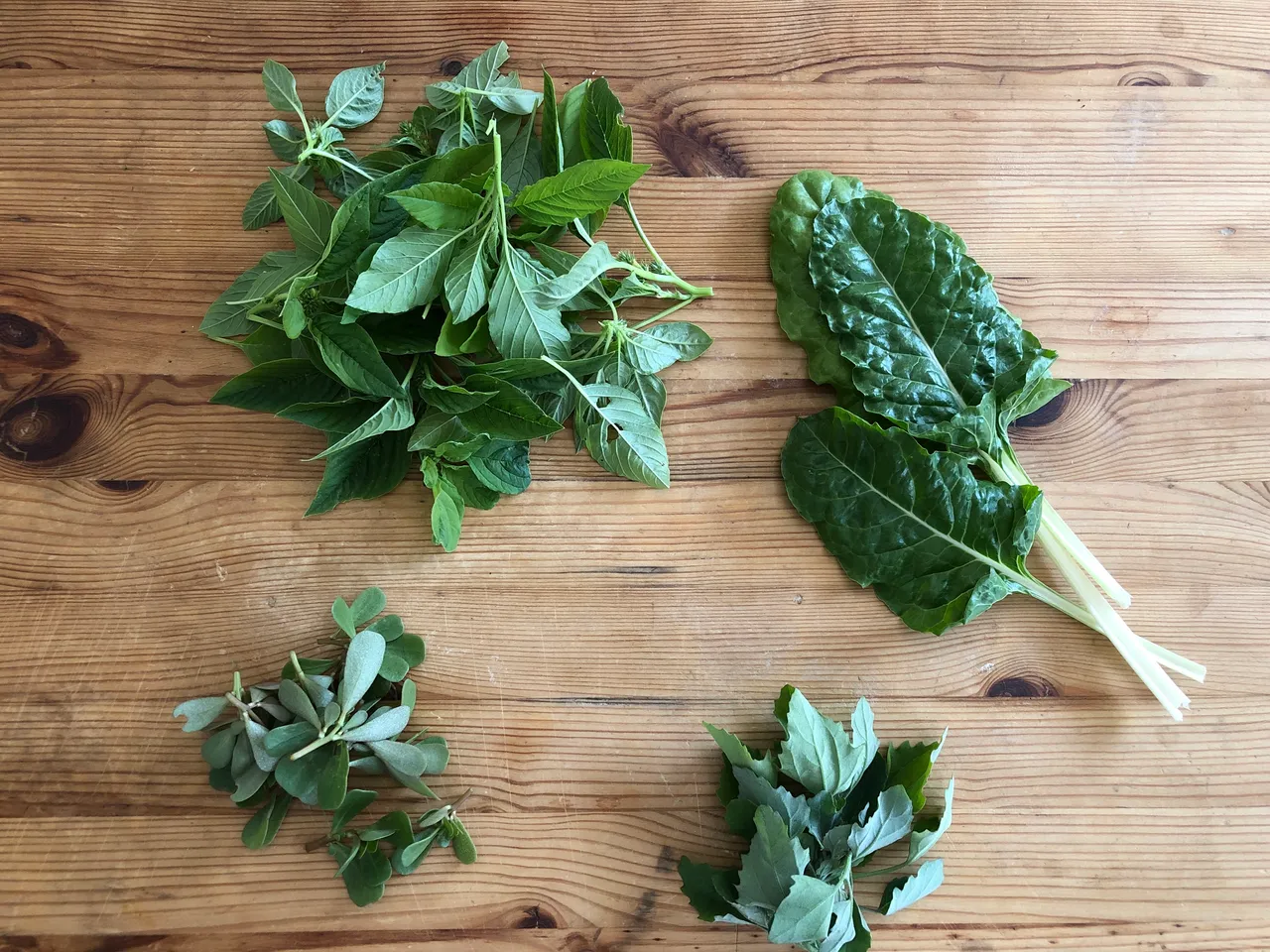
Marog, a certain type of amaranth, or sometimes called African spinach, is a weed that is culturally significant in South Africa for certain cultures. My family tells stories of people pulling these plants from nature in bags full to take home and disperse among family and friends. Today, this is disappearing and even asking people from the cultures that used this food source for hundreds of years one is sometimes left with a quizzical face: We do not know about this, or we do not eat it anymore. Again, I think people see this as done by "poor people" and most start to buy food from the store as a symbol of their wealth. But this comes with a price tag that I think is one we need to critically look at: The loss of nutrient-dense foods in our diets.
One example of this is the lack of omega-3 in our diets. One humble so-called weed packs a vicious punch with the amount of omega-3 fatty acid it contains; that is the common purslane (portulaca oleracea). I will write about this plant more in an upcoming post, but apparently, it has the highest amount of omega-3 fatty acids of any leafy green. I love this plant for it also signifies the summer. It has so many seeds, so it quickly populates throughout the garden, but this is a good thing for me.
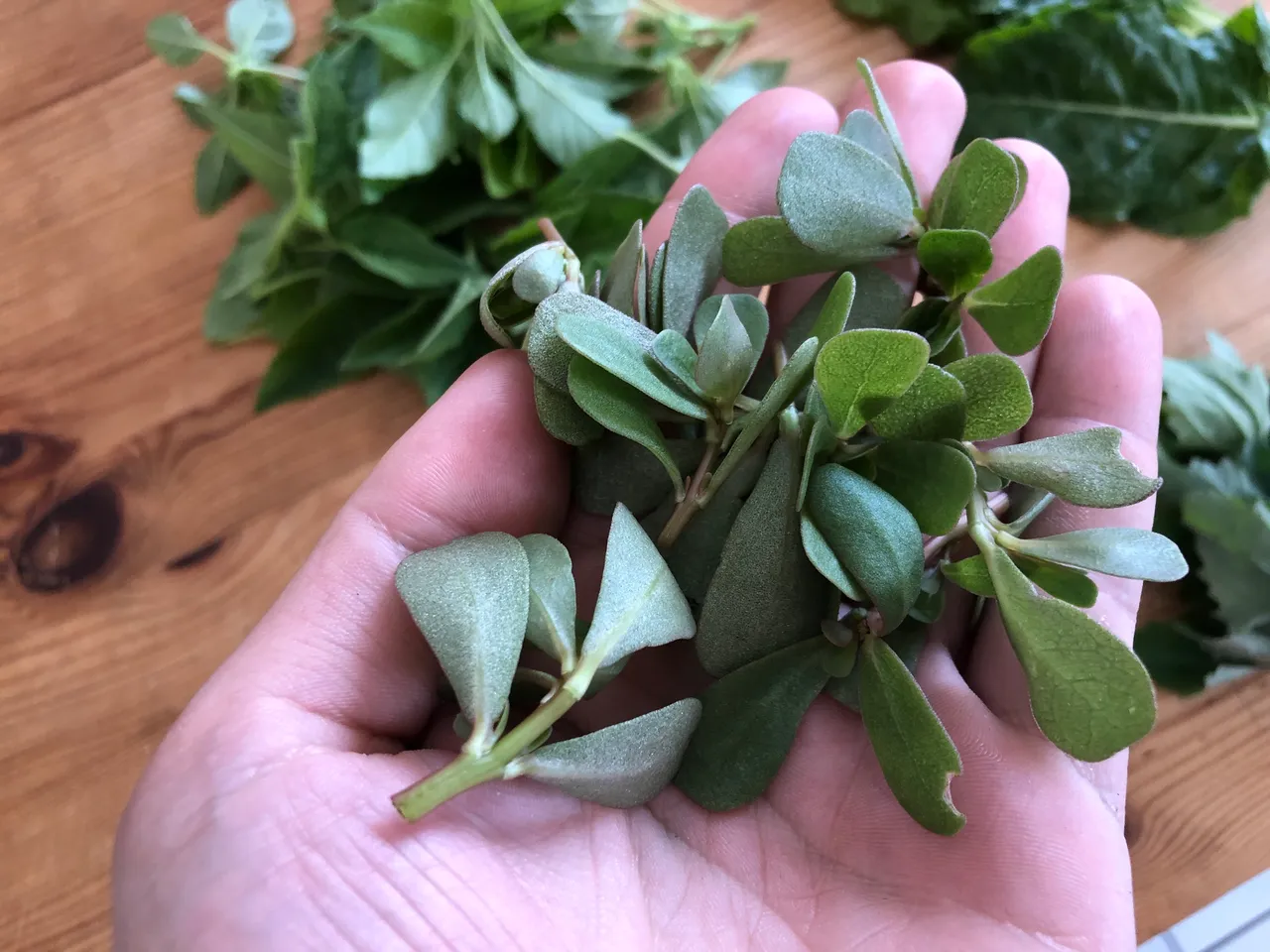
In any case, please join me in this recipe where I will show you a simple way of cooking rice with various summer leaves. What makes this dish so great is that it boils the leaves which eliminates any oxalic acids (if you are worried about eating too much of them, which can be a problem with lamb's quarters) but it also reduces the bitterness of some of these wild edible plants. In this simple dish, I used some leftover stock (and pumpkins/squashes) with onion, wild herbs/leaves, and rice. Please read on for my process and how you can start to incorporate wild herbs into your diet.
A Word of Caution when Cooking with Wild Herbs
Foraging for wild edible plants can be fun but dangerous. Living in the city, you are not always aware of the growing conditions of plants. Nor are you aware of the pesticides/herbicides people spray on plants nor are you aware of the water that wets the soil. And so on. So, if you decide to use wild herbs or plants, do your research about the plants themselves to correctly identify them and do your research on where they are growing etc. The best is always to grow them yourselves. But, again, do your research! With that out of the way, onto the recipe and method!
Recipe
The recipe is really simple. It has two parts: the rice and the flavorings.
For the rice you will need:
- 1 cup of rice,
- 2 cups of water (or stock like I used), and
- 1 tsp of salt.
For the flavorings, I used the following wild leaves:
- Amaranth leaves,
- Lamb's quarter leaves,
- Purslane leaves, and
- Swiss chard leaves.
Method
The method, I think, is the general rice cooking method. You cook the two cups of water and one cup of rice until the liquid is gone. Then you place the lid on the pot, turn the heat off, and wait for 20 minutes till the rice is perfectly cooked. What I do that's a little different is by adding or using stock and wild leafy greens. I will take you through my steps.
I made a stew the previous night. So I had some stock that was unused and some pumpkins/squashes. I opted to use this in addition to the water. You can use whatever stock you'd like or skip it entirely.
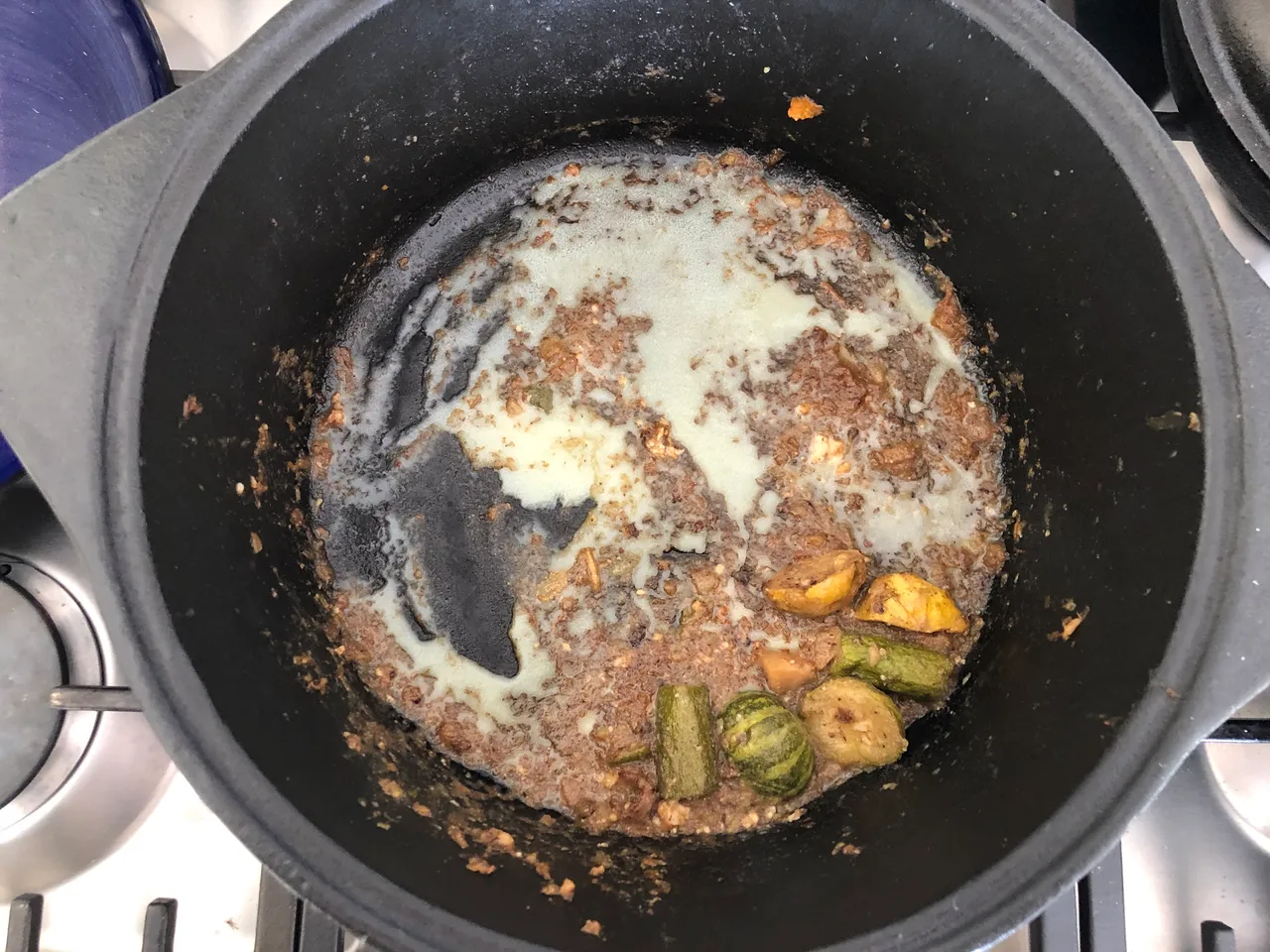
Chop your wild leaves and get your rice ready.

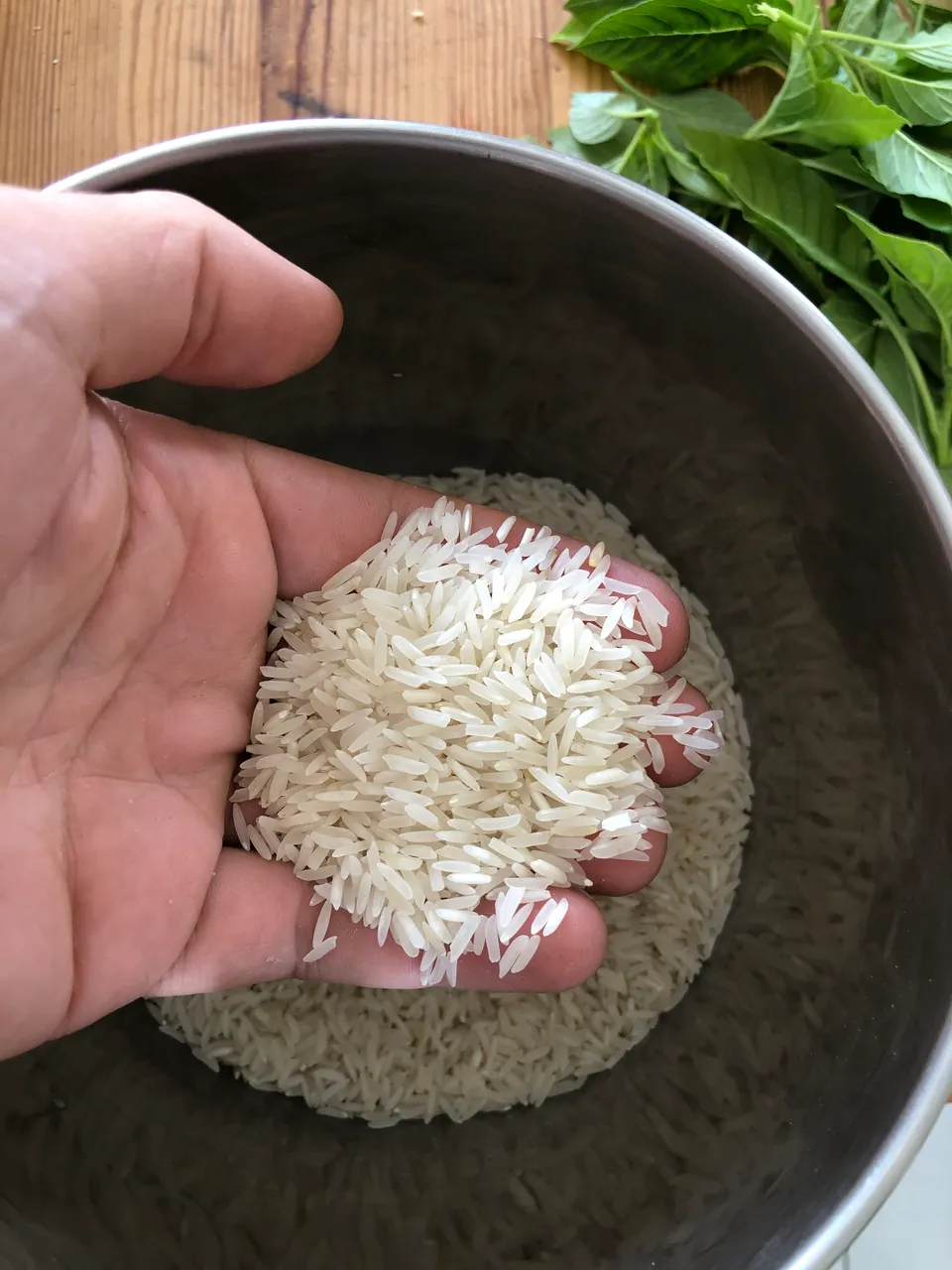
Add your chopped leaves into the stock and add the onions. When you are not using stock, brown the onions first, then add the chopped leaves.
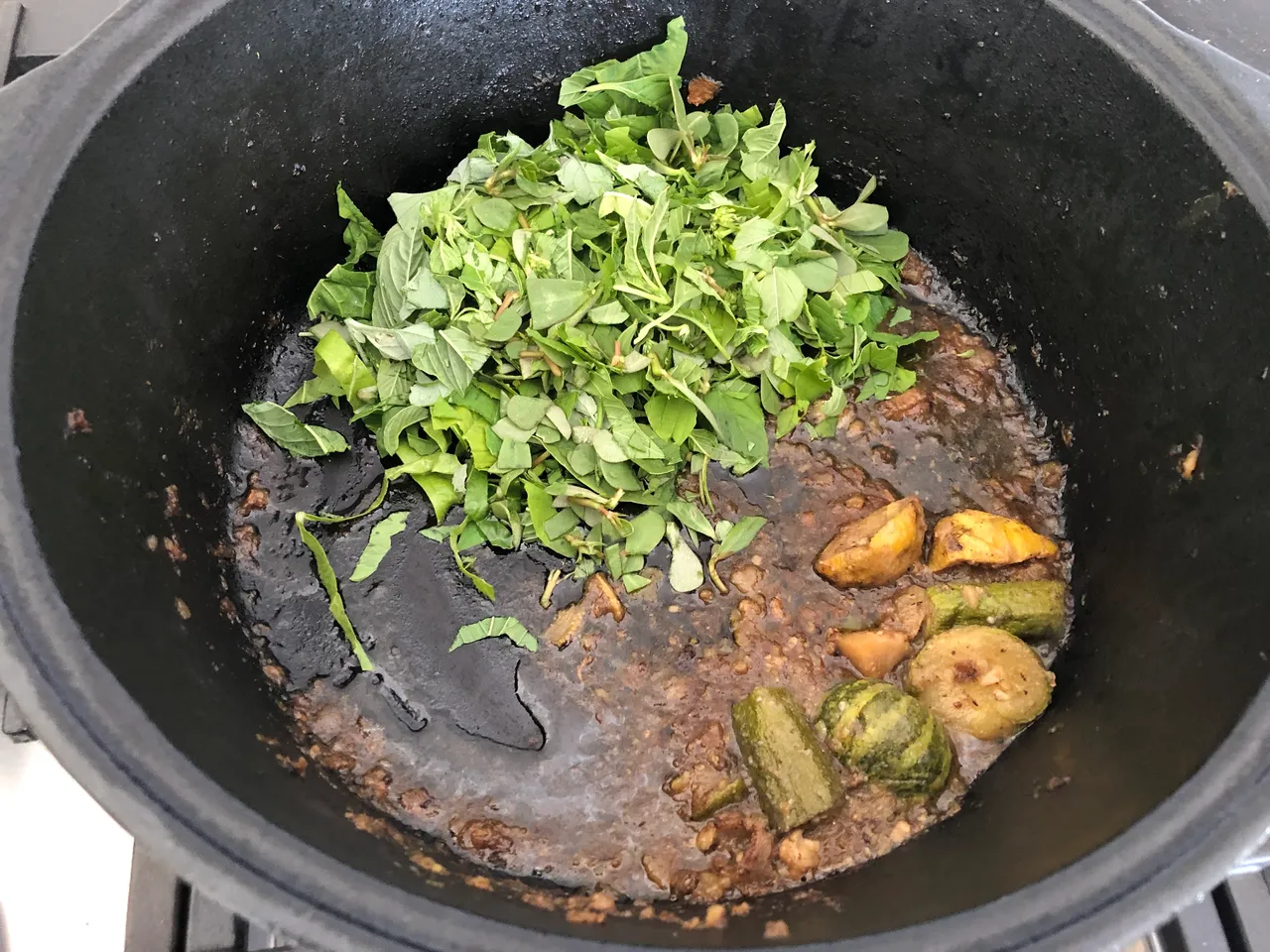

I used some of the leftover heat (I used a cast-iron pot) to lightly fry the rice I added.

I then transferred all of it to another pot in which I cook the rice. This is a step that is not needed. I only did it to use the stock that was leftover.
I cooked the rice until all of the liquid has dissipated. I then covered it with the lid (heat off) and waited for 20 minutes.
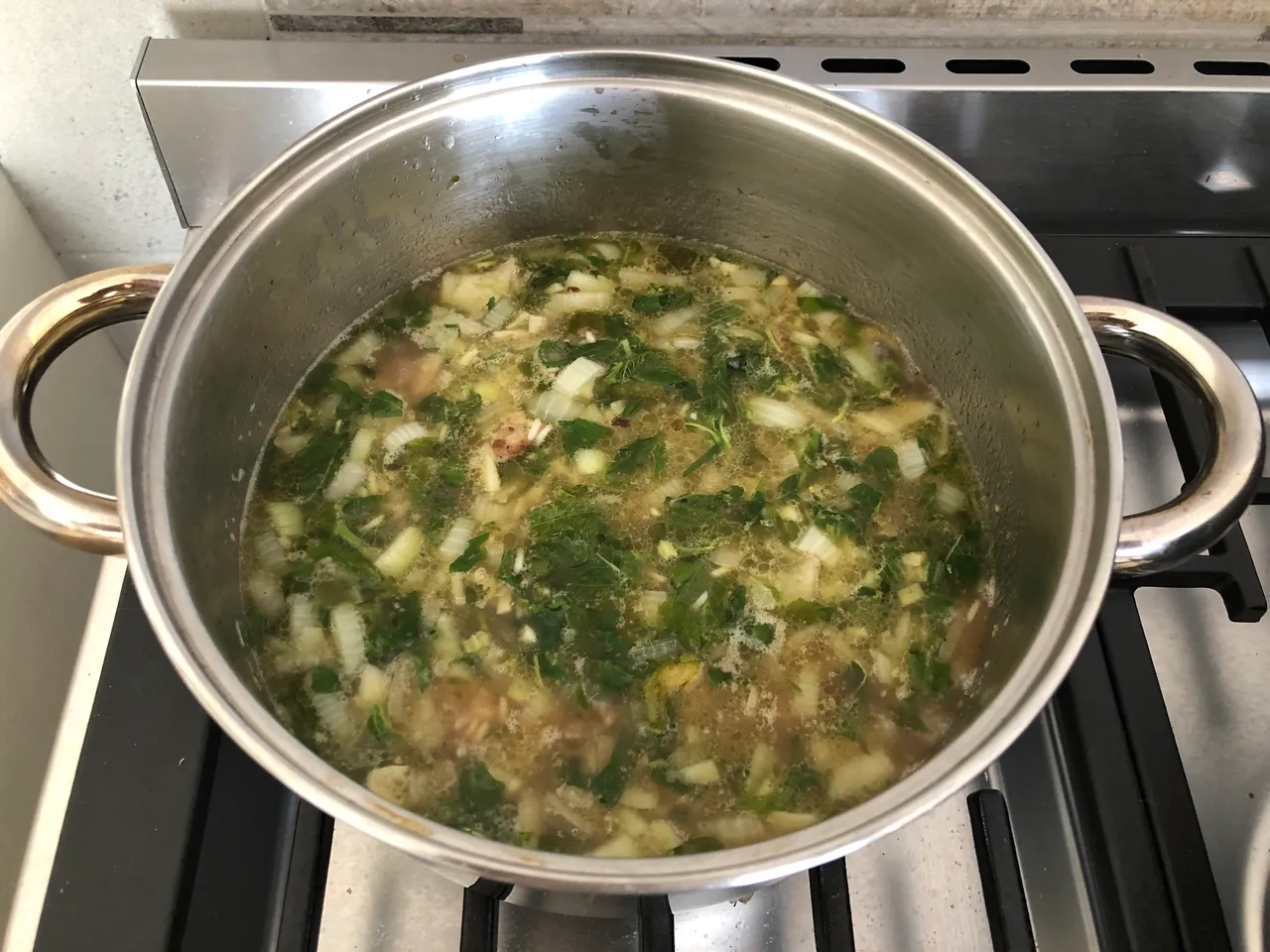
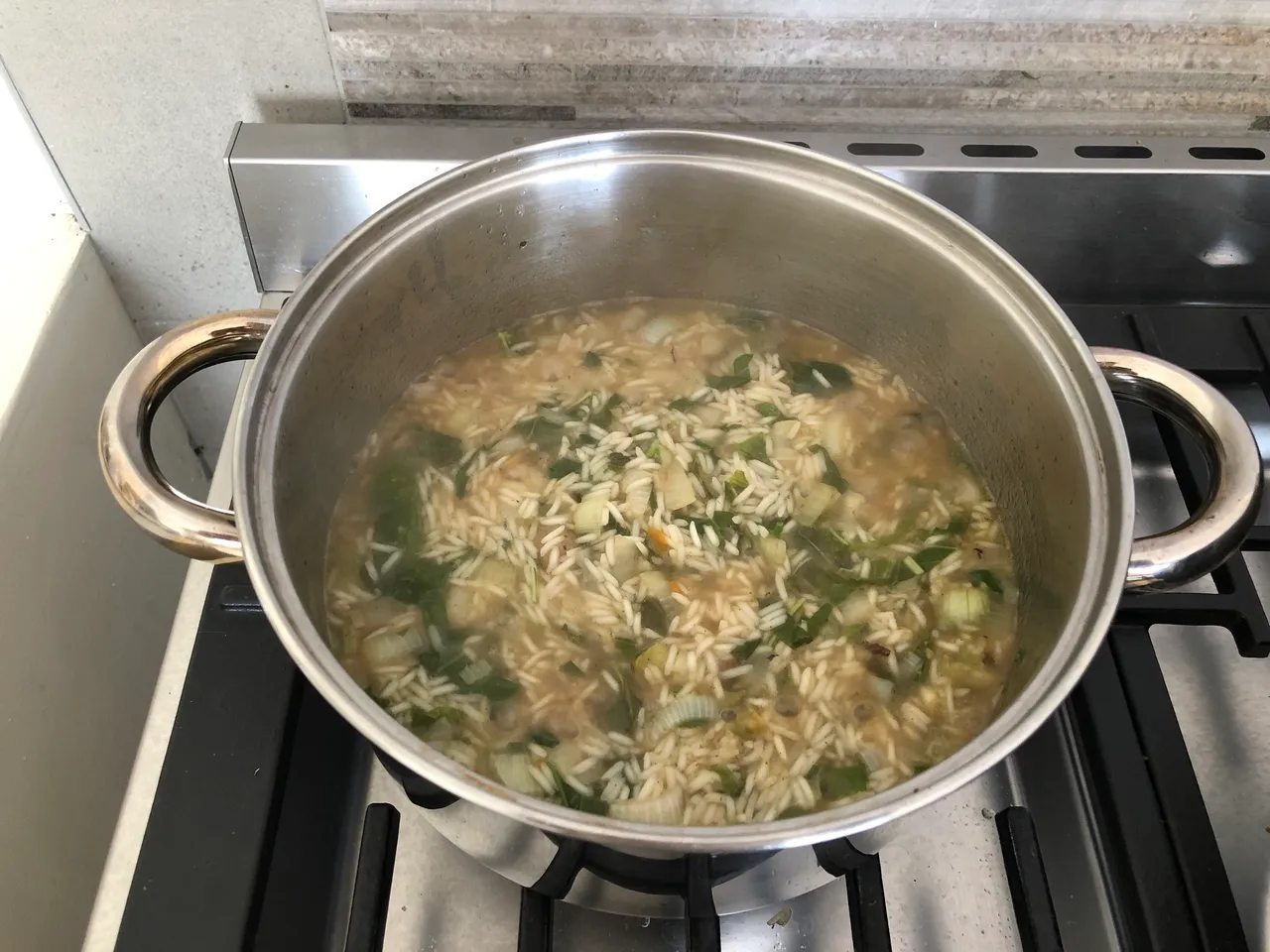

And there you have it! As easy as that.

Now you could have plated it a little better. This is sometimes what I call "dirty rice". It is not the most presentable (or dare I say Instagram-ready) dish. But it is an immensely flavorful dish. And I think very healthy. That is if you do not worry too much about the white rice! You can totally make this with brown rice or even other grains. With the addition of the leafy greens, or more specifically, wild leafy greens, this becomes a very nutritious meal. Or again, that depends on your stance towards wild edible plants! In any case, I think we as a society are slowly losing touch with what is out there for us to eat. Our diets are slowly turning into what is solely available at the supermarket. Or at least, this is the case in my country. I hope you will try this dish, and experiment with different flavors. But most importantly, to add some healthy counterparts into your diet where it is lacking!
Have you ever cooked with purslane or lamb's quarter or amaranth? Please let me know in the comments. Stay safe.
